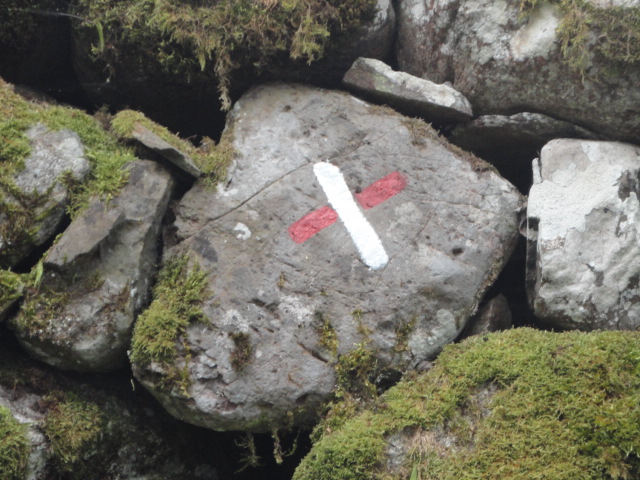Am I on the right path?

It can be hard to know which path to choose. Even a path that once was the right one, could at some point no longer be so. How to know if you are indeed still on the right path? Here is what I learned by following and reflecting upon the signs marking the Chemin de St. Jacques in France:
- Just like any official hiking path, life constantly gives us indications whether or not we are actually on the “right” path. By paying attention to those signs, we can spare ourselves lots of (maybe still enjoyable, but energy consuming) detours and eventually arrive at our destination.
- It is easy to miss a sign when distracted either by own thoughts or by other people.
- Sometimes we are lucky enough to have others behind us who see that we are about to walk into a wrong direction and call us back (if we can hear them). Or we might have others ahead of us, leading the way (just beware to not just blindly follow anyone, because they could also be mistaken – or simply on a different way).
- We can still notice later on that we took a wrong way, simply by not seeing ANY signs anymore or by running into a dead end. We then can turn around to the last “right” sign we saw and find out where we actually went wrong.
- Sometimes the sign for the “right” path is not yet visible (maybe it’s around the next corner). But all the other paths are marked with a X, so we have to trust that the one that’s left is actually the right one and that soon enough we will find a sign again “confirming” our choice.
- Sometimes we are walking on a path and see a X in the distance (the X marks the “wrong” way). We might then start to question, whether we are still on the right track. Only by continuing to walk and coming closer we might then find that there are actually two ways and that indeed we are still on the right one.
- Sometimes the signs are not clear or even missing. We then have to intuitively choose one way and follow it for a while until we either find a sign again or have to turn around to try the other possibility.
- Sometimes people deliberately change the signs to make you pass by their property, even though the path would normally not have led there. While they might indeed succeed in making you walk their path instead of their own for a while, manipulating in this way does not usually bring them the long-term success they had been looking for though, since you tend to experience this behavior as rather annoying.
- The right path is not always the easiest or most beautiful. It still might be a steep uphill, a slippery downhill or just an ugly road. The sun might burn you, the rain might soak you or the mosquitoes might torture you. Still you KNOW that you are on the right track and this makes you carry on, knowing that there will be better days again and that all those obstacles are only there to teach you important lessons and to test your determination to really continue on this path.
- The destination is not really what counts. Yes, it is important, because without a destination there wouldn’t be signs to mark the way towards it. But it’s along the way that you make your learnings. That includes any “wrong” turns you might make or accidental detours. Those “wrong” ways might actually make you discover beautiful views (perspectives), things or people, making them “right” after all, even if eventually this was not the “right” path. You might even find (like I did on the Camino) that you were too ambitious to go all the way in one time and fix a new destination that is more realistic and respecting your abilities at this point in time.
May you be able to see the signs marking your individual hiking path and follow it with faith towards your own spiritual destination!
